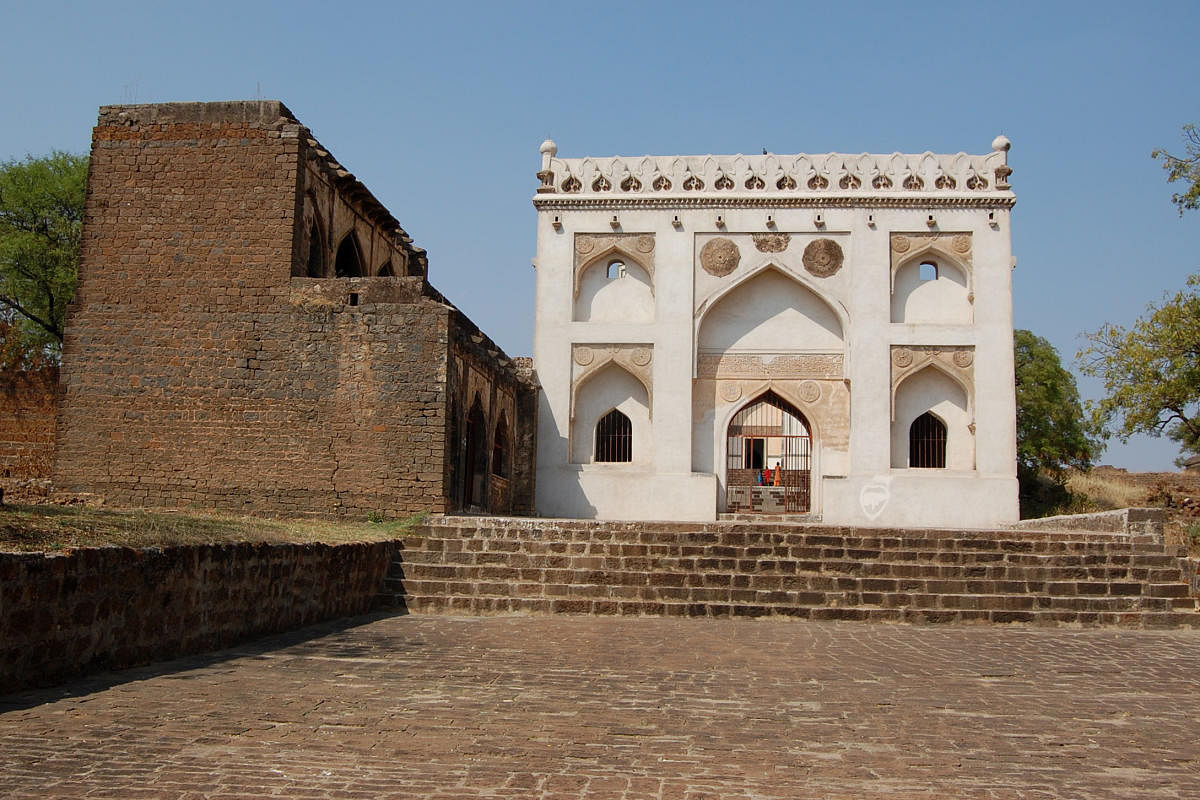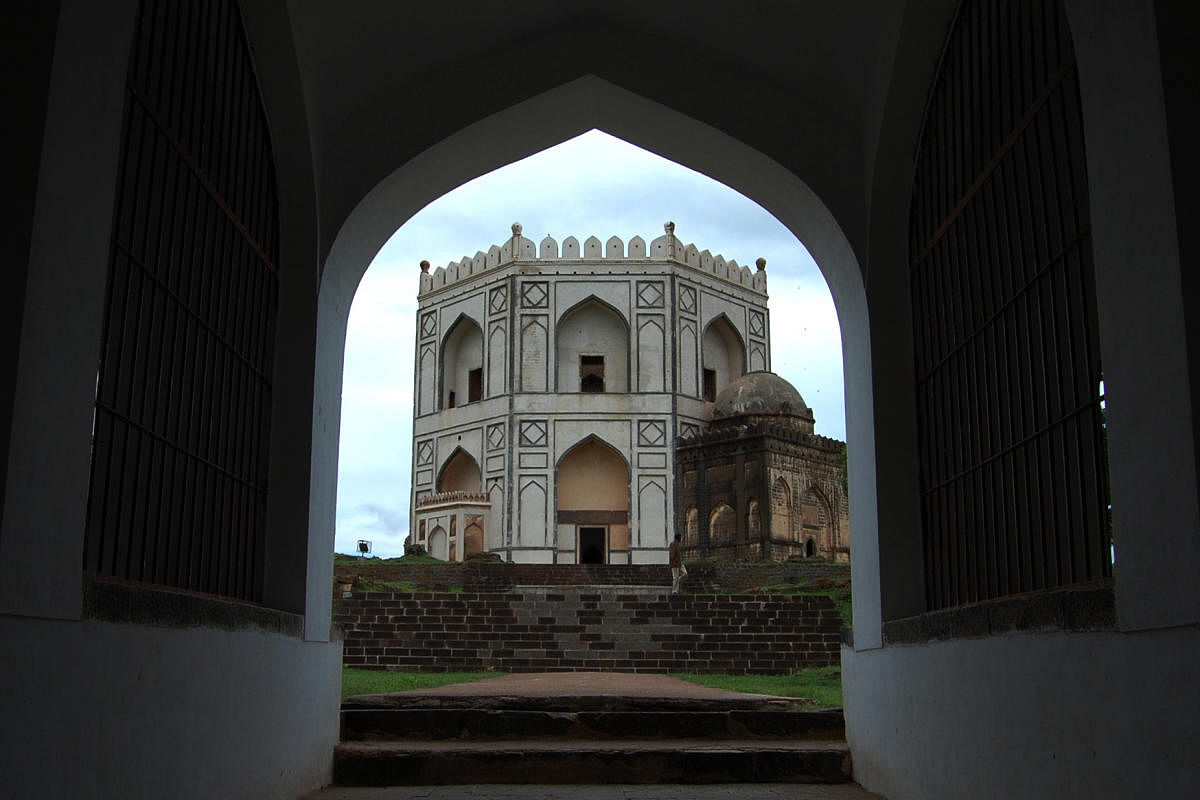
From the Mauryas to the Nizams, various dynasties that ruled Bidar in different periods of time have contributed to the region’s growth by patronising art, architecture, literature and culture. As the city borders Telangana and Maharashtra states, Kannada spoken here has an influence of Marathi, Hindi and Urdu languages.
Chaukhandi is a unique structure in Ashtur village which is about 4 km from Bidar city. Chaukhandi monument is located in a hilly area known for its scenic beauty. Ahmad Shah II built the structure at the location where Sufi saint Khalil-Ullah Kirmani was buried. The tomb which is constructed in the shape of a crown is well maintained and several people pay their tribute here daily.
Apart from the socio-culture and political spheres, the Sufi saint played a significant role during the Bahmani rule to bring communal harmony through his spiritual discourses. Sufism which is based on liberal principles grew popular among the Hindus as well and as a result, Sufi saints were equally respected by both Hindus and Muslims. It is said that the spiritual method of this Sufi saint was based on invocation and remembrance of God, reflection, self-examination, meditation.
Ahmed Shah Wali Bahmani who changed his capital from Gulbarga to Bidar invited Khalil-Ullah Kirmani in 1431 AD. After the demise of Sufi saint Sayyid Shah Muhammad Al Hussaini, who is also known as Hazrat Khwaja Bandanawaz, Ahmad Shah requested Kirmani to guide him in his rule. A person with a passion for literature, Kirmani strived hard to bring people to the realms of education.
The Sufi saint who had active interest in teaching people chose to live on the outskirts of the city for this purpose. Apart from education, he also taught people on social behaviour and individual conduct. He died in 1455 AD in Bidar.
Unique architecture
The tomb built in his memory is a four-storied structure which is in Turkish style with arches on all sides. This crown-shaped building is erected on a strong base and has thick walls. The hilly terrain enables one to get a panoramic view of Ashtur village from here. The huge entrance gate welcomes one with beautiful floral designs carved in stucco work on top of every arch. One can see experiments in art and architecture inside the tomb complex. Interestingly, when we climb the outer walls of the complex, we can see the top view of the domed structure of the tomb which is unique in its plan.
Persian calligraphy carved in black stone is a good example of engraved designs. The Tugrah style of calligraphy makes one wonder as to how the script has taken the shape of a unique art piece in black stone by the artisan. The stone is fixed on the top of the structure’s arched entrance to the tomb and is easily visible. Each corner is carved with Indo-Turkish style designs on the locally available black and reddish stone.
King Ahmad Shah Bahmani and his son, Alauddin Shah Bahmani, patronised art and architecture. While the Hindu masons and craftsmen were allowed to use their own style, they also had to follow the patterns of Islamic design. This led to the emergence of Indo-Islamic art in Bidar which later spread far and wide. Motifs of such designs can be frequently seen on the early Muslim buildings of the Deccan.
One can see flower vases, lotus, leaves, tigers and geometrical forms created in stucco technique in this building. The door of the hall consists of pillar and lintel fitted with wooden shutters of a plain design. The diminutive columns in this style and the parapet of trefoil pattern were created during the Bahmani period, and some fine specimens of them may be noticed on the tombs of this dynasty in Ashtur.
Hundreds of visitors, both Muslims and Hindus, visit this place to enjoy the beauty of architecture and to soak in the spiritual environment. The relic, on account of its association with the saint, is held in great reverence by the people of Bidar, who assemble to see it in large numbers during the month of Muharram every year.
